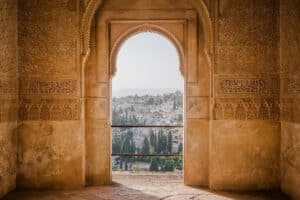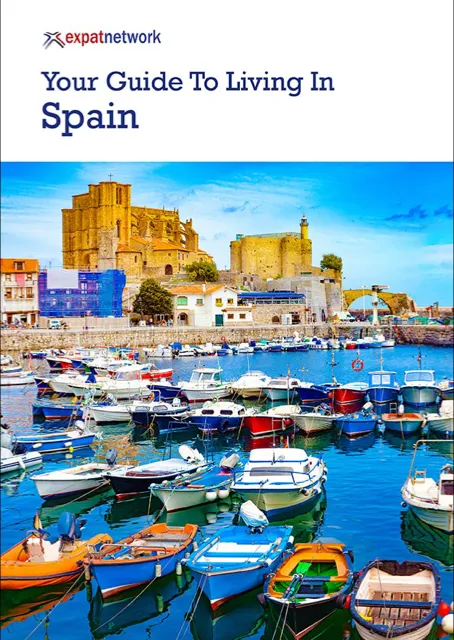Getting To Know Malaga The City, Part 3 – Places Of Interest

In Malaga there are many things to do… A place that blends history, nature, culture, art, sports and leisure with great dining experiences.
Malaka, as it was known in the olden days was thought to first be inhabited by the Phoenicians since the century VIII B.C. using the natural port on the foothill of Gibralfaro as a port, taking advantage of the silver and copper deposits.
The fabric of the city has therefore been built up over many years and continues to evolve as a city that is rich in history spanning almost 3 millennia that has developed into what is now considered Andalucian culture.
Monuments and Places of Note:
Cathedral ‘de la Encarnación de Málaga’
The Cathedral of Málaga was designed in a Renaissance style by Diego de Siloe and constructed between 1528 and 1782. It is located in the historic centre and represents one of the most important architectural structures in Málaga.
Due to a lack of funds only the North tower was completed, but the cathedral still counts as one of the most impressive throughout the region. The stunning Baroque façade represents a unique contrast to the magnificent and numerous frescos on the inside, with the sculptural works of Pedro de Mena being among the most noteworthy.
Picasso Museum in the Plaza De La Merced
Málaga is not only the birthplace of Pablo Ruiz Picasso, but also offers a marvellous collection of his works. The Museo Picasso Málaga is located in the centre of the old town, close to the Plaza de la Merced, where Picasso was born.
It exhibits a selection of Picasso’s work from the late 19th century until his death in 1973. The 230 different works offer a unique insight into his developing style and are completed by constantly changing contemporary exhibitions. The Buenavista Palace itself, in which the museum can be found, represents a stunning example of Andalusian architecture.
El Castillo de Gibralfaro – Archaeological site
The Castillo de Gibralfaro, a Moorish palace, dates back to the 10th century and is located on Gibralfaro hill, overlooking Málaga city. Historically, the castle is renowned for a three month siege by Catholic monarchs which came to a close with the surrender of the famished Malagueños.
The castle has been mostly restored and also features a military museum and is best known for the steep climb that offers the best views over the city. Gibralfaro is also accessible via the scenic walkway of Paseo Don Juan de Temboury, located to the south of the Alcazaba.
Roman Theatre Alcazaba.
The Roman theatre ruins can be found in the southern part of Málaga, at the foot of the Alcabaza.
It is estimated that it was constructed in the first century A.D. under the dominion of Augustus. The theatre represents the traditional Roman theatre architecture with the typical tiered seats and a grand entrance.
It remained in use until the third century until it was converted into a source for building material by the Arab conquerors. At the time of its construction, Málaga represented one of the most important cities in the region and the theatre itself is a historical reminder of the Roman imperium.
La Alcazaba Arab Castle – Archaeological site, Building, Museum
A palatial fortification at the foot of the Gibralfaro hill. Málaga’s most iconic landmark and the best-preserved Moorish fortress palace in Spain.
The fortress was constructed by the Hammudid dynasty in the early 11th century and later captured by Ferdinand and Isabel after the siege of Málaga in 1487.
The Alcazaba is most renowned for some of the most important Muslim works in Spain today, as well as its caliphal arch work. Alcazaba represents arguably some the most significant architectural works in the region and are an essential destination during any visit.
Centro de Arte Contemporáneo – The CAC Museum
Located in an area known as Soho de Málaga, on the banks of the normally dry Guadalmedina river, is the Centro de Arte Contemporáneo.
This exciting modern art museum is housed in the former wholesale market building which has a vast warehouse space of some 2,400 metres and has established itself as one of the most important contemporary art museums in Europe.
The museum has a permanent collection comprising around 400 works which have been loaned by private collectors. There is also a regular programme of temporary exhibitions dedicated to up-and-coming Spanish artists.
Teatro Cervantes
Situated in the heart of the historic quarter of Malaga, the Teatro Cervantes offers a wide range of cultural events within a classical ambience.
Set on a square a few minutes’ walk from the main shopping district of the city, the theatre is surrounded by streets populated with quaint shops, cafés and tapas bars.
The theatre plays an important part in the beautification and rejuvenation of the old centre of Malaga, which has taken place in the past decade. The atmosphere is stylish-bohemian, the architecture largely Baroque, though the Cervantes itself dates back to 1870, when it replaced the earlier Teatro Principe Alfonso.
Malaga Port and ‘Muelle Uno’.
Another prime draw to the town is the new look Port of Malaga where cruise ships are often moored. Recently extended and adapted for a more modern setting.
Muelle Uno is located in Malaga Port and after 13 years of planning and negotiations, and 80-million-euro the extended port was created and inaugurated in November 2011.
Modern shops, restaurants and bars border one side of the orange trees lining the promenade while exclusive yachts flank the other but it is the people watching that is the more popular pastime.
Andalucia Technology Park
The ‘Parque Tecnológico de Andalucía’ (PTA) in Málaga is fast becoming known as the Silicon Valley of Europe due to the levels of personnel it is recruiting in the technology sector for innovative.
A great balance between large multinational companies, university and SMEs is offered, focusing their activities mainly working on R&D projects that are respectful of the environment, devoted to manufacturing and advanced services.
With now more than 600 companies based onsite employing more than 16.000 people, most of which specialising in new technologies and media. The park is exactly that, a business park that is maintained as a park and surrounded by numerous plants, trees and lakes.
Malaga University
The University of Málaga is a public university ranked 23 among all Spanish universities and was established in 1972. It is currently offering 35,000 students degree courses varying from Fine Arts, Science, Communication, Education, Health Sciences, Economic and Business Sciences, Business and Management, Law, Social Work and Studies, Humanities, Medicine, Psychology, and Tourism.
The great majority of the teaching is organised within the two campuses and placed in 18 centres spread around the city centre.
The Málaga Trade Fairs and Congress Centre
A Málaga City Council backed project that provides the city with a strategically located building for trade fairs and conferences. Offers many possibilities for hosting of events and conducting business trade fairs and exhibits of all manner of products and goods from new vehicle product launches to real estate property shows.
The centre has reinforced Málaga’s lead on using the latest technologies to provide business professionals from all over the world a place to do business and open new markets and exchange experiences in the city.
The building is modern in construction and recreates the appearance of the Mediterranean Sea in tribute to the city’s maritime tradition.
To assist you in planning your move to Spain download our Guide containing all the information you will need to make the move:
